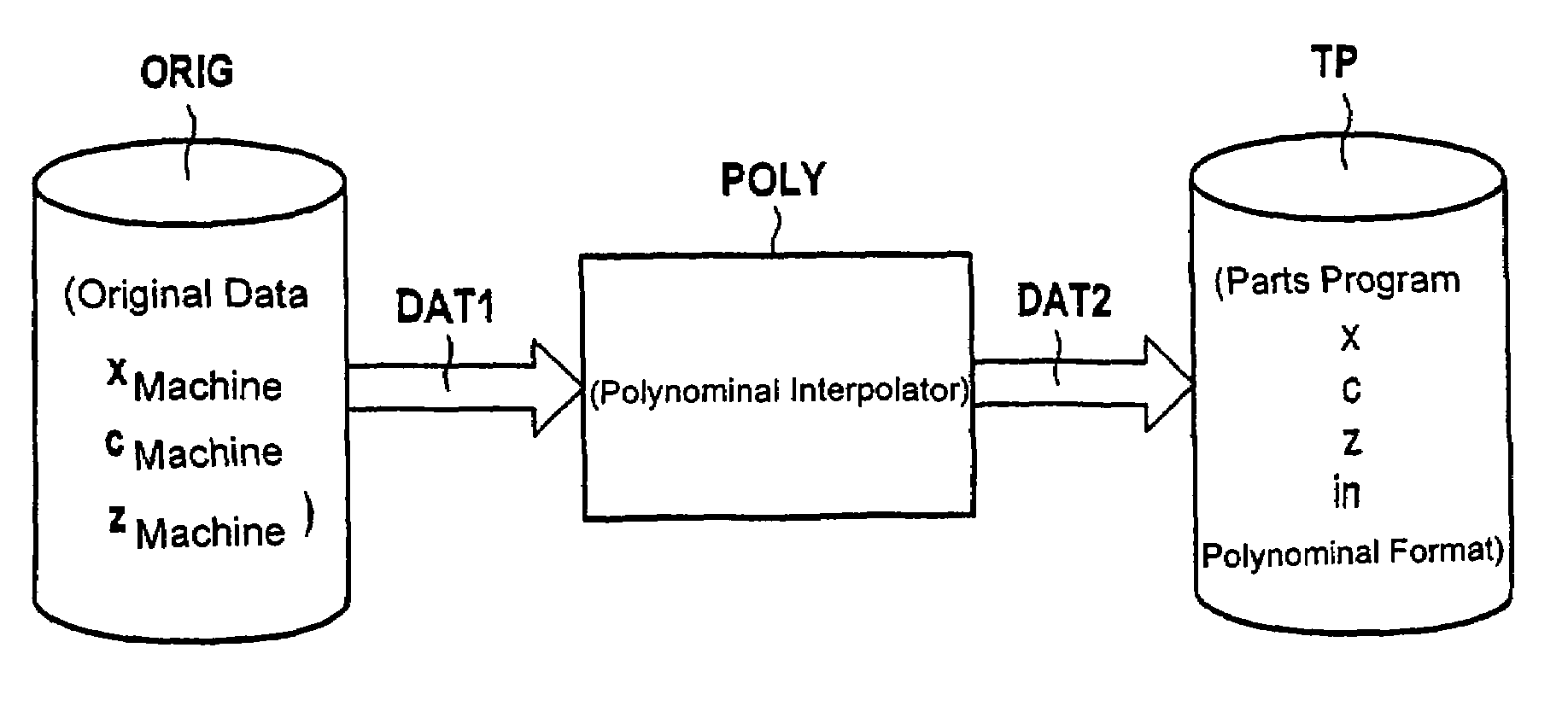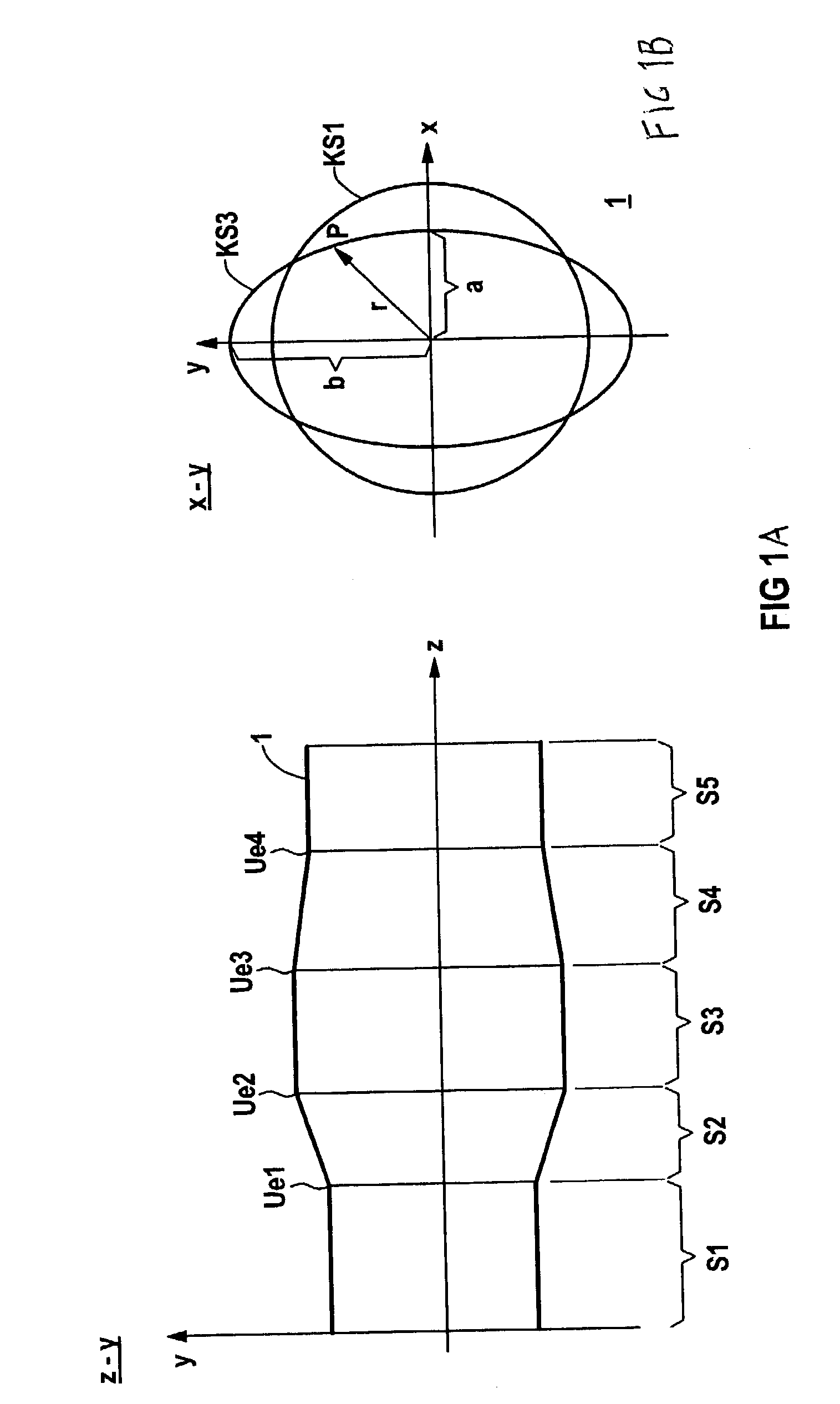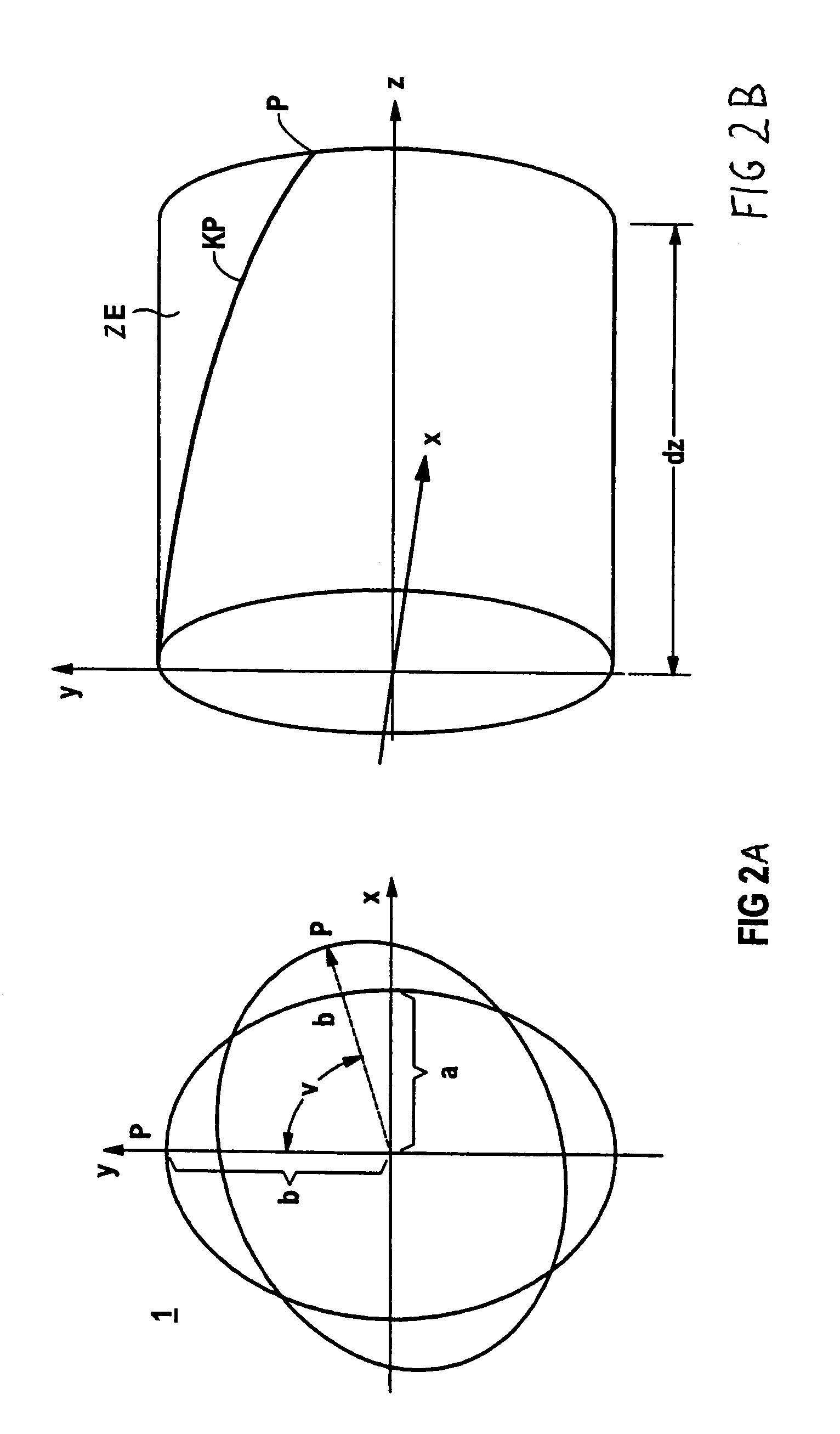Method for controlling an industrial processing machine
a three-dimensional path and industrial processing technology, applied in the direction of electric programme control, program control, instruments, etc., can solve the problem that the method of motion control is not capable of fully and continuously describing a freeform surface for turning, restricts the use of spline interpolation for controlling the path of numerically controlled machines or robots, and requires a large memory space. the effect of increasing the rotation speed
- Summary
- Abstract
- Description
- Claims
- Application Information
AI Technical Summary
Benefits of technology
Problems solved by technology
Method used
Image
Examples
Embodiment Construction
[0030]Throughout all the Figures, same or corresponding elements are generally indicated by same reference numerals. These depicted embodiments are to be understood as illustrative of the invention and not as limiting in any way.
[0031]Turning now to the drawing, and in particular to FIGS. 1A and 1B, there is shown an example for turning sinusoidal contours. A body 1, for example, a workpiece, can be represented in a Cartesian coordinate system having x-, y-and z-axes. In FIG. 1A, the body 1 is illustrated in a longitudinal cross section in a z-y coordinate system, whereas FIG. 1B shows the body 1 in a transverse cross section taken along Ue1 (KS1) and Ue3 (KS3), respectively, in an x-y coordinate system. The body 1, i.e. the useful element, can be subdivided into several sectors S1, S2, S3, S4 and S5, wherein Ue1, Ue2, Ue3 and Ue4 indicate transition points between the sectors. This configuration of the body 1 is depicted in the diagram represented in the y-z coordinate system (FIG....
PUM
 Login to View More
Login to View More Abstract
Description
Claims
Application Information
 Login to View More
Login to View More - R&D
- Intellectual Property
- Life Sciences
- Materials
- Tech Scout
- Unparalleled Data Quality
- Higher Quality Content
- 60% Fewer Hallucinations
Browse by: Latest US Patents, China's latest patents, Technical Efficacy Thesaurus, Application Domain, Technology Topic, Popular Technical Reports.
© 2025 PatSnap. All rights reserved.Legal|Privacy policy|Modern Slavery Act Transparency Statement|Sitemap|About US| Contact US: help@patsnap.com



